NFLPA Letting Medical Science Point the Direction in Fight to Protect Players' Health and Safety
By Chuck Johnson
If you don’t speak for them, who will?
When facing that question of conscience, Dr. Bennet Omalu refused to be silenced despite attempts to suppress his research into brain damage suffered by National Football League players.
Likewise, the National Football League Players Association (NFLPA) demanded to be heard and has continued to speak volumes in the wake of Omalu’s breakthrough discovery of chronic traumatic encephalopathy -- the concussion-related brain disease commonly known as CTE.
As dramatically portrayed in the motion picture, Concussion, starring Will Smith as Omalu, there is no greater health concern in today’s football than concussions and the dangerous and potentially deadly effects of repeated head collisions.
With a fierce determination to hold NFL owners and their medical staffs accountable for enforcing collectively bargained league protocols - as it relates to players suffering concussions - the NFLPA, under the leadership of executive director DeMaurice Smith, has stepped up as the vanguard for player safety and expanded research into brain-related and other football injuries.
At the heart of its commitment, the NFLPA dedicated millions to create the Football Players Health Study at Harvard University, a 10-year initiative utilizing the world’s top medical specialists in their respective fields.
The Harvard study, entering its third year, focuses on new ways to diagnose, treat and prevent ALL common injuries in current and retired NFL players. In closely examining concussions, the Harvard research has already led to a potentially major breakthrough toward slowing down and reversing Tau protein in the brain, the condition which leads to CTE.
In proactively addressing the health and safety of its members, the NFLPA sees the Harvard study as a means to enhance the lives of players past, present and future.
“The objective of this project is to impact and improve the quality of life for our players before, during and after they play professional football,” said Sean Sansiveri, NFLPA vice president of business and legal affairs, who is a member of the research program’s executive committee.
“We’re looking at the incidence and severity of injuries and other medical conditions that impact the quality of life and length of life of a football player. This is a unique approach, focusing on the whole player over the course of his life. We believe in the short-term and long-term, this kind of study will make a make a major difference,” Sansiveri said.
Since its launch in February 2014, the Harvard research has involved more than 2,700 active and retired players, the largest sample group in history, and is making progress.
Included are seven pilot studies targeted at the treatment and prevention of injuries and illnesses most prevalent among current and former players. The initial three pilots have yielded results:
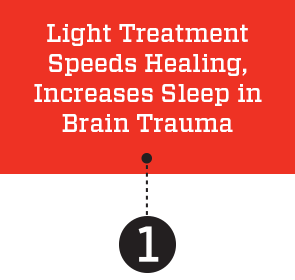
Studies have shown that concussions lead to less blood flow and slow healing. Participants in these trials have reported that shining red/near-infrared light on brain cells lead to improved sleep and less post-traumatic stress disorder symptoms.
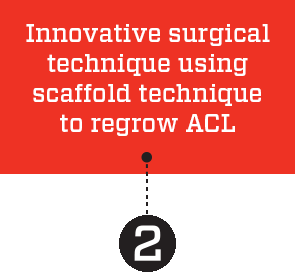
In the past four seasons, 230 NFL players have suffered a torn ACL or anterior cruciate ligament. Dr. Martha Murray, an orthopedic surgeon and Harvard Medical School assistant professor, has preliminarily developed an ACL “scaffolding” that connects the flow of blood between torn ends of the ligament and allows it to repair itself. At present, reconstructive ACL surgery requires cadaver or hamstring tissue or the patellar tendon. Recovery time is often a year or more and four of five patients develop osteoarthritis over time. While the first human clinical studies have just started, animals had less muscle loss and there was no occurrence of osteoarthritis using Murray’s method.
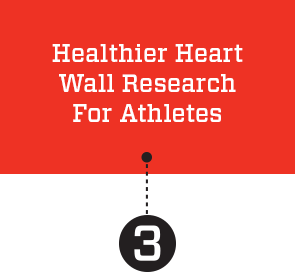
Testing has discovered that strength training can make heart walls stiff and hamper the heart from resting properly. This research seeks ways to prevent stiffness and determine the benefits of strength training on a healthy heart versus the drawbacks.
The Harvard research team received 150 proposals after appealing to the medical community last year and accepted four additional pilots for funding:
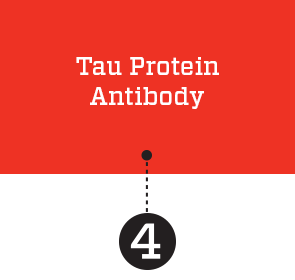
A team led by Harvard professor Dr. Ping Lu has developed an antibody that blocks the spread of tau protein in animal studies and prevents brain cells from dying. This development directly builds on Omalu's autopsy of former Pittsburgh Steelers center Mike Webster in 2002, which led to the discovery of CTE. Webster's brain was found to have large accumulations of tau protein, which affects moods and emotions and was attributed to the player's bizarre behavior prior to his sudden death.The Harvard research holds promise for stopping and slowing down the disease. http://www.nature.com/nature/journal/v523/n7561/full/nature14658.html
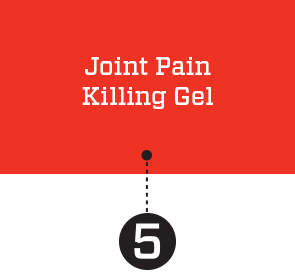
A team of Harvard assistant professors from Brigham and Women’s Hospital is developing an injectable hydrogel to give pain relief for inflamed joints -- only when needed. The current treatments for osteoarthritis are physical therapy, oral pain medications or steroid injections, and many times the alternative is joint replacement.
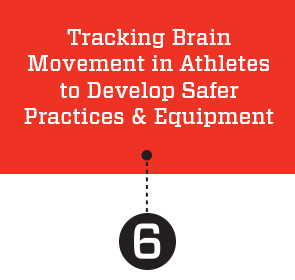
The objective is to develop a non-invasive device to detect and track the brain’s movement while players are competing and in motion. Currently, there are helmets and mouth guards to detect the impact of hits, but nothing to measure in-game impact on the brain.
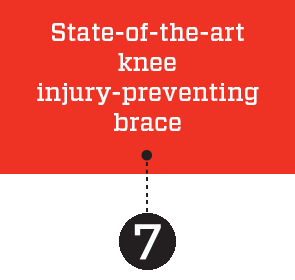
A soft brace to help prevent knee injuries is being developed by Conor Walsh, Harvard professor of mechanical and biomedical engineering. The brace supports the knee joint during high-risk events without affecting normal performance levels and joint function.
The NFLPA also continues to be vigilant in strengthening the league’s concussion protocols, which stands as the model for sports at all levels -- professional, college, high school and youth.
Through the efforts of the NFLPA and the NFLPA Mackey-White Player Health and Safety Committee, several protections were added to the league concussion protocols this season:
Sideline Concussion Experts
(“unaffiliated neurotrauma consultants” or “UNCs”) are now part of the sideline medical team with team physicians and certified athletic trainers. The UNCs have increased involvement in the diagnosis and care of concussed players on game day.
Evaluated After Injury
Players reported to have suffered a “stinger,” “burner,” or neck injury, are now be evaluated for concussion by the team physicians/UNC unit.
After witnessing the lengths to which NFL officials tried to discredit Omalu’s findings and keep from coming to light, the NFLPA faced a stark reality: The job of protecting and improving the health, welfare and workplace safety for its players had to be maintained unilaterally if necessary.
“The core history of this is that we had a doctor who made a revolutionary discovery. And the reality is that the league did employ virtually all of its resources to prevent that discovery from either being published or legitimized,” NFLPA Executive Director Smith said.
“Literally the first thing I did as the new executive director in 2009 was to show up at a congressional hearing and be brutally honest about the NFL’s role in trying to block this research and the necessity of us moving forward to keep a group of employees safe.”
Smith added: “For the players association, this movie is a bookend of where we were and where we are now. We lived the movie. At the end of the day, it’s our job as a union to teach our players what the history is. Sometimes that’s great and sometimes it’s not so great. But the role of a movie like this is to tell a story in a narrative that will impact today’s generation.”
“Our protocols are now the best in class,’’ Sansiveri said. “I don’t know of any other sport or arena that does anything better than we do. The safeguards in place are evidence-based and we continue to make improvements.”
Enforcement and compliance by the clubs remain a concern for the NFLPA because of recent events when concussion protocols weren’t followed. A glaring case involved St. Louis Rams quarterback Case Keenum, who stayed on the field for the team's final two offensive plays after suffering a concussion against the Baltimore Ravens.
The league, in a statement, vowed to continue working with the NFLPA to “make improvements as necessary to protect the health and safety of NFL players, including consideration of discipline for future violations of the protocols.”
But accountability for everybody still has to be enforced.
“For the longest, the players have had the onus to change how the game is played,” said Cincinnati Bengals offensive tackle Eric Winston,” president of the NFLPA. “If a player goes head to head with a defenseless player, he’s immediately flagged, and on top of that he gets a big-dollar fine.
“That’s been the frustrating part on the players’ part. What happens when concussion protocol isn’t applied correctly by those responsible? Everybody admits protocol wasn’t administered correctly (in Keenum’s case) but the Rams or their staff hasn’t been fined," Winston said. "Until everybody is held accountable and subject to discipline like we are, the players will have a problem with that.”
Winston, in his 10th season, says his colleagues embrace and fully support the NFLPA’s role in advancing players safety through education about concussions.
“It gets better and better every year from the standpoint of guys understanding the seriousness of concussions,” he said. “Guys with two or three years in the league, they get it because the protocols have been in place as they came up. But a 10-12 year veteran like myself, we had to come a long way. We now know why it’s necessary to take a concussion seriously.
“I also think coaches are coming around and society as a whole is coming around in understanding just how serious this is," Winston added. "The NFLPA has done a great job getting the knowledge out there and making sure everybody understands that taking time to recover from a concussion is good for your long-term as well as your short-term health.”
“Knowledge is the key,” said Kenny Jenkins, a running back from 1982-86 and president of the NFLPA former players Washington, D.C., chapter. “With the focus now on concussions, players have been afforded the information to understand the dangers and take the necessary steps to recover.
“We’ve come a long way since I played," Jenkins said. "You were supposed to be able shake off a little stinger or dinger or a small concussion or a bell rung. That was expected back then. And, if you didn’t have it, it was almost like, ‘Well, he’s not tough.’ Now we know that a concussion can cause problems down the road and even lead to death. It has opened our eyes and created a cascade of safety measures to be put in place that have helped our game, especially for the youth coming up.”
"Among the most effective ways of addressing any public health problem is through a combination of education and science. The NFLPA is using those tools effectively to help its members control their destiny in regard to concussions and general health.” Anthony G. Alessi, MD Associate Clinical Professor of Neurology and Orthopaedics University of Connecticut.
As head of the NFLPA, Smith’s job mandates that the union remain at the forefront of player safety initiatives.
“You can’t lead from behind,” he said. “From day one, I’ve been blessed to have extremely strong player leaders. I take my marching orders and directions from them.
“One of the reasons our union has been at the forefront is because we are the only sport - and certainly one of the few businesses in the world - that has a 100 percent injury rate. Our guys go into the workplace knowing they are going to be injured. As a result," Smith said, "they have an expectation from their union to engage in a practice to make a dangerous workplace as safe as possible. That’s where we start.”
Smith said the union will continue to work with the league through collective bargaining and he welcomes the spotlight the movie has put on the concussion issue.
“Science led us to a conclusion and I really believe our job, both the NFL’s and NFLPA’s job, is to embrace the science and take the science where it leads us,” he said.